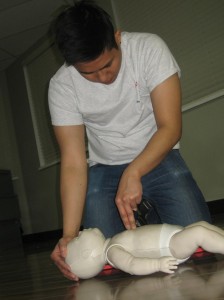Becoming a certified CPR rescuer is not easy. Finding the best provider that suits your certification needs is the first step. With Honolulu CPR, trainees don’t have to worry about the ease of enrolment and quality of training and certification they will receive. All of the programs offered at this provider have curricula that meet the standard and guidelines set by the American Heart Association. You won’t find better providers in Hawaii than Honolulu CPR.
Getting certified as a rescuer
All programs at Honolulu CPR award trainees with credentials, provided that they complete all requirements and pass the post-tests given after each program’s lessons are completed. These credentials are valid all over the US for 24 months. If a rescuer desires to renew his or her credentials, re-certification classes are available. In the case of an expired credential, the rescuer will have to take retake the entire training program.
Choosing a program
There are two categories two choose from: Basic Life Support or Advanced Life Support classes. BLS training has three classes available. These teach basic CPR skills for one-person and two-person rescue, focused in simple skill building and emergency management. ALS programs are more complicated, tailored exclusively for healthcare providers and professionals. They teach trainees management of cardiac arrest in clinical set-ups, such as medical facilities.

Basic Life Support training
- Heartsaver CPR – This is a four-hour class for the public, teaching students CPR techniques for one-person rescue. It focuses on teaching the adequate performance of chest compressions and rescue breaths. Automated external defibrillation training is also included in the program, along with standard first aid. Students need to pass a skills test (optional) to receive their credentials.
- Heartsaver CPR (C) – This tailors the public program for healthcare providers. It is a 4.5-hour class that teaches one-person CPR rescue to HCPs. AED and first aid is also included in the program. The post-test for certification is a skills test and a written exam.
- Basic Life Support – This is purely a healthcare provider program in a 4.5 hour class. It teaches one-person and two-person CPR rescue. The curriculum also introduces trainees to BLS guidelines and Chain of Survival from the AHA. Re=-certification is 4 hours long.
Advanced Life Support training
All ALS programs require students to pass a pre-test and have a valid BLS training certificate to qualify. They also have a post-test consisting of a practical and written exam to get certified. Both ALS programs are only for healthcare providers and professionals.
- Advanced Cardiac Life Support (ACLS) – This program is 16 hours long, completed in two days. It teaches students CPR management in a healthcare facility, focusing on the use of equipment and medication for adult patients. Basics are still introduced in the program, however not as intently as BLS training.
- Pediatric Advanced Life Support (PALS) – This program is 14 hours long, completed in two days. As opposed to adult management in ACLS, this program teaches trainees how to manage CPR in pediaric patients, from infants to younger children. Pediatric pharmacology and assessment is included as well.
